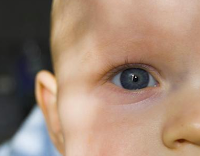Those cat eye lenses
really might make your costume stand out from the crowd, but don’t let decorative contact lenses play a
trick on you this Halloween. Did you know that costume contact lenses require a
prescription? Just like your regular contacts, costume lenses are considered to
be medical devices and even with perfect vision, a prescription and eye exam is
required. Wearing lenses that aren’t
properly fitted for you can scratch the eye and actually cause blood vessels to
grow into the cornea. This could also lead to eye infection and potential
permanent vision loss. A scary thought, indeed.
Selling non-prescription lenses, like costume lenses found
online or in beauty shops, is illegal. Many consumers are unaware that these
lenses are not FDA-approved and with advertising claims like “one size fits
all” even the most savvy shopper might consider trying out a pair without
realizing the importance of a proper prescription.
Ophthalmologist Clayton Falknor, M.D. offered, “If most
people understood the potential for permanent vision loss by infectious
keratitis that can occur with non-approved or ill-fitted contacts, very few
would be willing to take the risk in using them.”
Whether colored contact lenses are a personal style choice
or the finishing touch to the perfect Halloween costume, they should be fitted
to your eye and purchased at a retailer that requires a prescription or from an
eye care professional.
Source & Photo Credit: http://www.geteyesmart.org/eyesmart/glasses-contacts-lasik/colored-lenses.cfm



